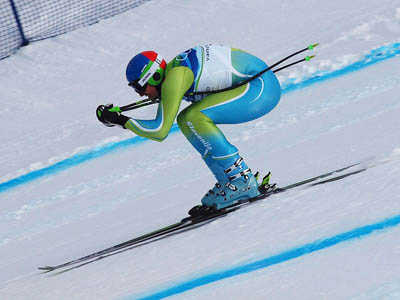Feb 12, 2018Going to the Olympics

Although their efforts aren’t recognized at the podium, the medical volunteers who go to the Olympics go through a lengthy process to get there. In order to be considered, applicants must have a minimum of three years of experience, along with licensing or certifications, a minimum of $1 million coverage for malpractice insurance, no sanctions or disciplinary actions, and no felonies.
According to Stat News, the application process begins with a $90 fee and continues through background checks, interviews, and training. The individuals who are eligible to volunteer visit one of the three U.S. Olympic Training Centers and care for athletes there.
“You have a kind of internship type of thing, where you get to know their system, [and] they get to know you, basically,” Scott Rodeo, MD, Sports Medicine Surgeon at the Hospital for Special Surgery, and volunteer with the U.S. Olympic swim team in 2004, 2008, and 2012, said. “Then you start with smaller competitions.”
The U.S. Olympic Committee’s Sports Medicine Division is in charge of recruiting volunteers who work with the Olympic teams during training, practices, and the games. There are doctors, athletic trainers, nurses, chiropractors, and others who work with the athletes; some work specifically with one team and others shift as needed.
“Sometimes you can get one of the athletes to write a letter to the committee saying that they like working with you and they want to work with you at the Olympics,” David Pascal, DC, Chiropractor at Health Institute of North Carolina, and volunteer at the 1996, 2008, 2012, and 2016 Olympic games, said.
The way athletes get to know medical volunteers is through the smaller competitions. The USOC sends notices of volunteer medical rotations for national events, including the Pan American Games or Olympic qualifiers.
Spots for the medical volunteers are assigned on a first-come, first-served basis. Traveling to the events is a personal expense for the volunteers to cover. The medical volunteers’ tasks range from helping with laundry to helping with the on-site sports medicine clinic.
“You need to be ready to work and check your ego at the door,” Rodeo said. “It’s a little bit like residency.”
This process can take anywhere from two to 15 years. Those who are chosen to go to the Olympics are typically notified the year before.
“You get an email saying you’ve been selected,” Kim Tee, DPM, Podiatrist at Thorek Memorial Hospital (Chicago, Ill.), volunteer with the U.S. golf team for the 2016 Olympics, said. “After you meet all the criteria. But the criteria, that is something only the committee knows.”
Along with the time that gets committed to applying, the process takes a lot. The positions are voluntary, which can add up with uncompensated work and travel expenses.
“Over the time I was trying out, I was away from my practice for six months, and lost about a quarter of a million dollars,” Mark Hutchinson, MD, Professor of Orthopaedics and Sports Medicine and Head Team Physician at University of Illinois Chicago, and volunteer physician at the 2016 Olympics, said.
Despite the cost, those who have volunteered say the experience was worth it. Although a lot of the issues they deal with are typical for travel events, the work is something they are passionate about doing.
“It’s volunteerism at its best,” Rodeo said. “You do it because you want to give back. You have to love it to do it.”



